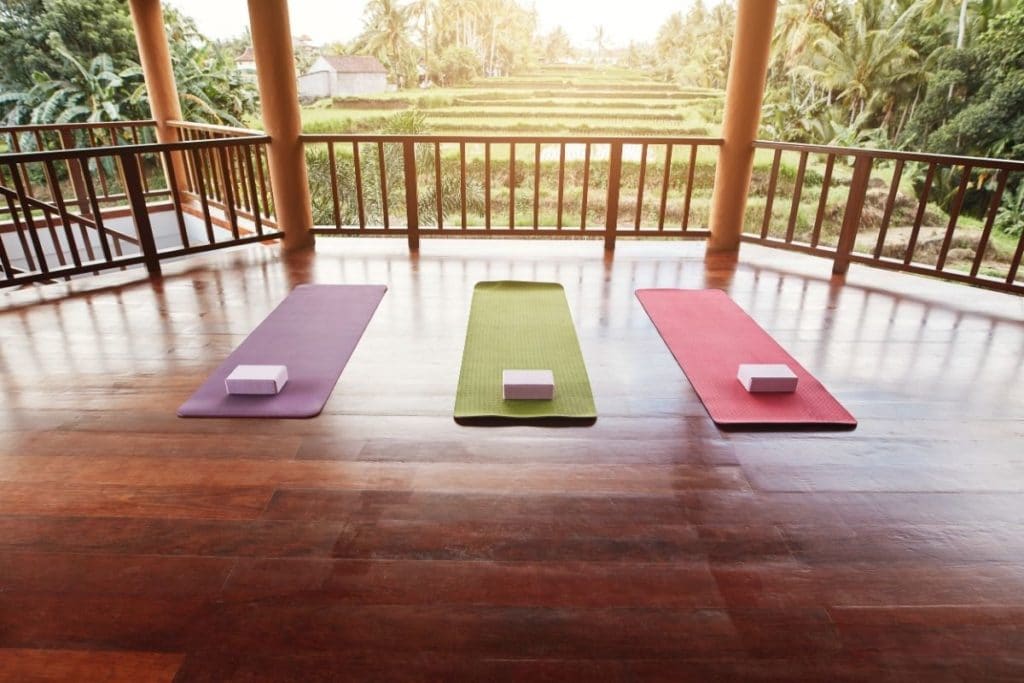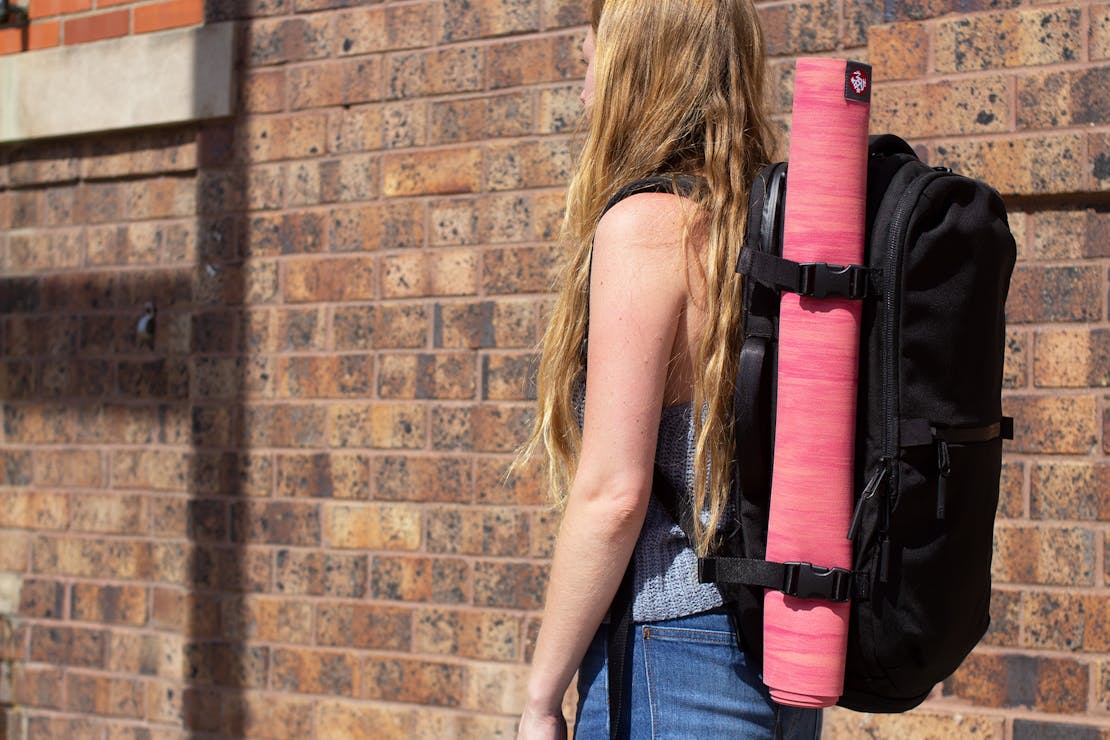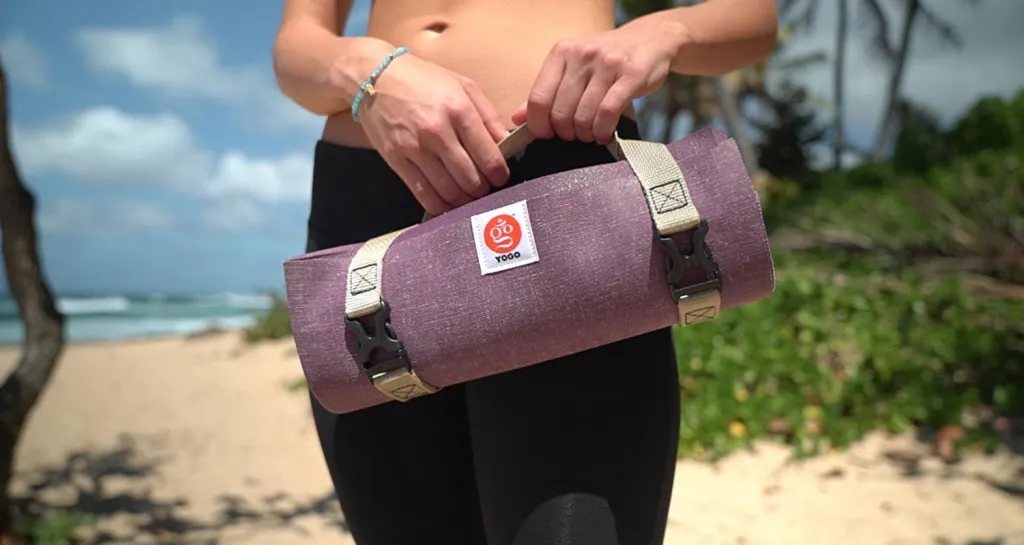I. Introduction

Traveling is a wonderful way to explore new places, experience different cultures, and rejuvenate the mind and body. For yogis on the go, maintaining a consistent yoga practice while traveling is important for physical and mental well-being. This is where a travel yoga mat comes in handy. In this article, we will explore the importance of a travel yoga mat, and discuss the factors to consider when choosing the perfect one for your travel needs.
A. Importance of a travel yoga mat for yogis on the go
Yoga has become increasingly popular as a form of exercise and relaxation, and millions of people worldwide enjoy practicing it regularly. For dedicated yogis, a yoga mat is a crucial piece of equipment that provides a comfortable and stable surface for their practice. However, when it comes to travel, conventional yoga mats can be bulky and inconvenient to carry around.
This is where a travel yoga mat comes in. Designed specifically for yogis on the go, travel yoga mats are lightweight, compact, and easy to carry. They can be easily folded or rolled up to fit into a suitcase or backpack, making them an essential item for those who want to maintain their yoga practice while traveling.
B. Enhancing flexibility, balance, and relaxation during travel
Traveling, although exciting, can be stressful and physically demanding. Sitting in cramped seats during long flights, carrying heavy luggage, and walking for extended periods can take a toll on the body. Practicing yoga during travel can help alleviate these physical discomforts by enhancing flexibility, balance, and relaxation.
A travel yoga mat provides a dedicated space for yoga practice, enabling yogis to stretch and move their bodies freely. The grip and traction provided by the mat’s surface ensures stability and prevents slipping, allowing yogis to safely practice various poses. The cushioning and support provided by the mat help protect the joints and provide comfort, even on hard or uneven surfaces.
II. Factors to Consider When Choosing a Travel Yoga Mat
![The 10 Best Travel Yoga Mats - A Detailed Buyer's Guide [2023]](https://m.media-amazon.com/images/I/5121Sr6NEPL.jpg)
When choosing a travel yoga mat, there are certain factors that you should consider to ensure that it meets your specific needs and preferences. Let’s explore these factors in more detail:
A. Portability and Lightweight Design
The primary purpose of a travel yoga mat is to be lightweight and compact, so it is important to find a mat that prioritizes portability. Look for mats that are made from materials that are known for their compactness and weight reduction, such as natural rubber or microfiber.
Additionally, consider whether you prefer a mat that can be folded or rolled up. Foldable mats are typically more compact and easier to pack, while rollable mats provide a smaller footprint and are generally more popular. Choose the design that suits your travel style and preferences.
B. Durability and Longevity
A travel yoga mat should be able to withstand the wear and tear associated with frequent travel. Look for mats that are known for their durability and resistance to tearing, slipping, and abrasions. High-quality materials such as natural rubber or PVC are commonly used for their durability and longevity.
It is also important to consider the quality of the materials used in the mat. Some mats may be made from eco-friendly and sustainable materials, which not only benefit the environment but also contribute to the overall durability and performance of the mat.
C. Thickness and Cushioning

The thickness of a travel yoga mat is an important consideration as it affects both comfort and portability. A mat that is too thin may not provide enough cushioning and support, while a mat that is too thick may be bulky and difficult to carry.
Ideally, look for a mat that strikes a balance between comfort and portability. A thickness of around 1.5 to 3 millimeters is generally considered to be appropriate for a travel yoga mat. However, keep in mind that personal comfort preferences may vary, so it is important to try out different mats to find the one that suits you best.
D. Grip and Traction
One of the most important features of a yoga mat, especially for travel, is the grip and traction it provides. A mat with a non-slip surface ensures stability and secure footing during practice, even on slippery surfaces. This is particularly important when practicing more challenging poses or when practicing in humid or sweaty conditions.
Look for mats that have a textured or sticky surface to prevent the mat from sliding during practice. Mats made from natural rubber or those with a polyurethane coating are known for their excellent grip and traction.
III. Popular Types of Travel Yoga Mats

A. Foldable Yoga Mats
Foldable yoga mats are designed specifically for easy folding and compact packing. They are typically made from lightweight materials that can be easily folded without losing their shape. Most foldable mats have a folding mechanism that allows them to be conveniently folded into a small size, making them perfect for travel.
Not only are foldable yoga mats easy to pack and carry, but they are also suitable for yogis who prioritize minimalism and convenience. They take up minimal space in your luggage and can be easily stored when not in use. Foldable mats are great for yogis who are always on the go and don’t want to be weighed down by a bulky mat.
B. Rollable Yoga Mats
Rollable yoga mats, as the name suggests, can be easily rolled up into a compact size for convenient packing and transportation. They are typically made from durable materials that can withstand the rolling and unrolling process without losing their shape or grip.
One of the main advantages of rollable mats is their versatility and ease of use. They can be used not only for travel but also for regular yoga practice. Many yogis prefer to have a separate mat for their travel needs, while still having a high-quality mat for their regular practice. Rollable mats offer the flexibility to meet both of these needs.
C. Travel Mat-Towel Combo

The travel mat-towel combo is a unique type of travel yoga mat that combines the properties of a mat and a towel in one product. These mats are typically made from absorbent materials that provide excellent grip even when wet. They are particularly useful for hot yoga or for yogis who prefer a mat with added absorbency.
The main advantage of a travel mat-towel combo is that it eliminates the need to carry a separate towel. This not only saves space in your luggage but also reduces the weight you have to carry. Additionally, these mats are easy to clean and dry quickly, making them ideal for yogis who are constantly on the move.
IV. Maintenance and Care Tips for Travel Yoga Mats
A. Cleaning Techniques
Cleaning a travel yoga mat is important not only for hygiene but also for maintaining its performance and prolonging its lifespan. While on the go, it may not always be convenient to clean your mat with water and soap. In such cases, portable cleaning solutions can be used, such as yoga mat sprays or wipes. These solutions are designed to effectively clean the mat’s surface without the need for rinsing or drying.
When you have access to water, it is recommended to give your mat a thorough clean. Use a mild detergent or a yoga mat cleaner and gently scrub the surface with a soft cloth or sponge. Rinse the mat thoroughly to remove any residue, and then hang it to dry. Avoid direct sunlight or high heat, as this can damage the mat’s material.
B. Regular Inspection and Repairs
Regularly inspecting your travel yoga mat for any signs of wear and tear is essential for maintaining its performance and safety. Look for any fraying edges, holes, or thinning areas on the mat’s surface. If you notice any minor damages, it is important to address them promptly to prevent further deterioration.


